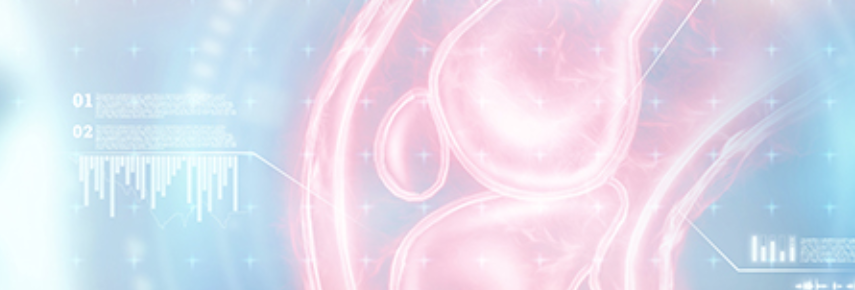Koji Isodono, Hidenari Matsumoto, Debiao Li, Piotr J Slomka, Damini Dey, Sebastien Cadet, Daisuke Irie, Satoshi Higuchi, Hiroki Tanisawa, Motoki Nakazawa, Yoshiaki Komori, Hidefumi Ohya, Ryoji Kitamura, Tetsuichi Hondera, Ikumi Sato, Hsu-Lei Lee, Anthony G Christodoulou, Yibin Xie, Toshiro Shinke
{"title":"利用 T1 加权磁共振成像和近红外光谱分析冠状动脉斑块特征,预测围手术期心肌损伤。","authors":"Koji Isodono, Hidenari Matsumoto, Debiao Li, Piotr J Slomka, Damini Dey, Sebastien Cadet, Daisuke Irie, Satoshi Higuchi, Hiroki Tanisawa, Motoki Nakazawa, Yoshiaki Komori, Hidefumi Ohya, Ryoji Kitamura, Tetsuichi Hondera, Ikumi Sato, Hsu-Lei Lee, Anthony G Christodoulou, Yibin Xie, Toshiro Shinke","doi":"10.1148/ryct.230339","DOIUrl":null,"url":null,"abstract":"<p><p>Purpose To clarify the predominant causative plaque constituent for periprocedural myocardial injury (PMI) following percutaneous coronary intervention: <i>(a)</i> erythrocyte-derived materials, indicated by a high plaque-to-myocardium signal intensity ratio (PMR) at coronary atherosclerosis T1-weighted characterization (CATCH) MRI, or <i>(b)</i> lipids, represented by a high maximum 4-mm lipid core burden index (maxLCBI<sub>4 mm</sub>) at near-infrared spectroscopy intravascular US (NIRS-IVUS). Materials and Methods This retrospective study included consecutive patients who underwent CATCH MRI before elective NIRS-IVUS-guided percutaneous coronary intervention at two facilities. PMI was defined as post-percutaneous coronary intervention troponin T values greater than five times the upper reference limit. Multivariable analysis was performed to identify predictors of PMI. Finally, the predictive capabilities of MRI, NIRS-IVUS, and their combination were compared. Results A total of 103 lesions from 103 patients (median age, 72 years [IQR, 64-78]; 78 male patients) were included. PMI occurred in 36 lesions. In multivariable analysis, PMR emerged as the strongest predictor (<i>P</i> = .001), whereas maxLCBI<sub>4 mm</sub> was not a significant predictor (<i>P</i> = .07). When PMR was excluded from the analysis, maxLCBI<sub>4 mm</sub> emerged as the sole independent predictor (<i>P</i> = .02). The combination of MRI and NIRS-IVUS yielded the largest area under the receiver operating curve (0.86 [95% CI: 0.64, 0.83]), surpassing that of NIRS-IVUS alone (0.75 [95% CI: 0.64, 0.83]; <i>P</i> = .02) or MRI alone (0.80 [95% CI: 0.68, 0.88]; <i>P</i> = .30). Conclusion Erythrocyte-derived materials in plaques, represented by a high PMR at CATCH MRI, were strongly associated with PMI independent of lipids. MRI may play a crucial role in predicting PMI by offering unique pathologic insights into plaques, distinct from those provided by NIRS. <b>Keywords:</b> Coronary Plaque, Periprocedural Myocardial Injury, MRI, Near-Infrared Spectroscopy Intravascular US <i>Supplemental material is available for this article.</i> © RSNA, 2024.</p>","PeriodicalId":21168,"journal":{"name":"Radiology. Cardiothoracic imaging","volume":"6 4","pages":"e230339"},"PeriodicalIF":4.2000,"publicationDate":"2024-08-01","publicationTypes":"Journal Article","fieldsOfStudy":null,"isOpenAccess":false,"openAccessPdf":"https://www.ncbi.nlm.nih.gov/pmc/articles/PMC11375432/pdf/","citationCount":"0","resultStr":"{\"title\":\"Coronary Plaque Characterization with T1-weighted MRI and Near-Infrared Spectroscopy to Predict Periprocedural Myocardial Injury.\",\"authors\":\"Koji Isodono, Hidenari Matsumoto, Debiao Li, Piotr J Slomka, Damini Dey, Sebastien Cadet, Daisuke Irie, Satoshi Higuchi, Hiroki Tanisawa, Motoki Nakazawa, Yoshiaki Komori, Hidefumi Ohya, Ryoji Kitamura, Tetsuichi Hondera, Ikumi Sato, Hsu-Lei Lee, Anthony G Christodoulou, Yibin Xie, Toshiro Shinke\",\"doi\":\"10.1148/ryct.230339\",\"DOIUrl\":null,\"url\":null,\"abstract\":\"<p><p>Purpose To clarify the predominant causative plaque constituent for periprocedural myocardial injury (PMI) following percutaneous coronary intervention: <i>(a)</i> erythrocyte-derived materials, indicated by a high plaque-to-myocardium signal intensity ratio (PMR) at coronary atherosclerosis T1-weighted characterization (CATCH) MRI, or <i>(b)</i> lipids, represented by a high maximum 4-mm lipid core burden index (maxLCBI<sub>4 mm</sub>) at near-infrared spectroscopy intravascular US (NIRS-IVUS). Materials and Methods This retrospective study included consecutive patients who underwent CATCH MRI before elective NIRS-IVUS-guided percutaneous coronary intervention at two facilities. PMI was defined as post-percutaneous coronary intervention troponin T values greater than five times the upper reference limit. Multivariable analysis was performed to identify predictors of PMI. Finally, the predictive capabilities of MRI, NIRS-IVUS, and their combination were compared. Results A total of 103 lesions from 103 patients (median age, 72 years [IQR, 64-78]; 78 male patients) were included. PMI occurred in 36 lesions. In multivariable analysis, PMR emerged as the strongest predictor (<i>P</i> = .001), whereas maxLCBI<sub>4 mm</sub> was not a significant predictor (<i>P</i> = .07). When PMR was excluded from the analysis, maxLCBI<sub>4 mm</sub> emerged as the sole independent predictor (<i>P</i> = .02). The combination of MRI and NIRS-IVUS yielded the largest area under the receiver operating curve (0.86 [95% CI: 0.64, 0.83]), surpassing that of NIRS-IVUS alone (0.75 [95% CI: 0.64, 0.83]; <i>P</i> = .02) or MRI alone (0.80 [95% CI: 0.68, 0.88]; <i>P</i> = .30). Conclusion Erythrocyte-derived materials in plaques, represented by a high PMR at CATCH MRI, were strongly associated with PMI independent of lipids. MRI may play a crucial role in predicting PMI by offering unique pathologic insights into plaques, distinct from those provided by NIRS. <b>Keywords:</b> Coronary Plaque, Periprocedural Myocardial Injury, MRI, Near-Infrared Spectroscopy Intravascular US <i>Supplemental material is available for this article.</i> © RSNA, 2024.</p>\",\"PeriodicalId\":21168,\"journal\":{\"name\":\"Radiology. Cardiothoracic imaging\",\"volume\":\"6 4\",\"pages\":\"e230339\"},\"PeriodicalIF\":4.2000,\"publicationDate\":\"2024-08-01\",\"publicationTypes\":\"Journal Article\",\"fieldsOfStudy\":null,\"isOpenAccess\":false,\"openAccessPdf\":\"https://www.ncbi.nlm.nih.gov/pmc/articles/PMC11375432/pdf/\",\"citationCount\":\"0\",\"resultStr\":null,\"platform\":\"Semanticscholar\",\"paperid\":null,\"PeriodicalName\":\"Radiology. Cardiothoracic imaging\",\"FirstCategoryId\":\"1085\",\"ListUrlMain\":\"https://doi.org/10.1148/ryct.230339\",\"RegionNum\":0,\"RegionCategory\":null,\"ArticlePicture\":[],\"TitleCN\":null,\"AbstractTextCN\":null,\"PMCID\":null,\"EPubDate\":\"\",\"PubModel\":\"\",\"JCR\":\"Q1\",\"JCRName\":\"RADIOLOGY, NUCLEAR MEDICINE & MEDICAL IMAGING\",\"Score\":null,\"Total\":0}","platform":"Semanticscholar","paperid":null,"PeriodicalName":"Radiology. Cardiothoracic imaging","FirstCategoryId":"1085","ListUrlMain":"https://doi.org/10.1148/ryct.230339","RegionNum":0,"RegionCategory":null,"ArticlePicture":[],"TitleCN":null,"AbstractTextCN":null,"PMCID":null,"EPubDate":"","PubModel":"","JCR":"Q1","JCRName":"RADIOLOGY, NUCLEAR MEDICINE & MEDICAL IMAGING","Score":null,"Total":0}
引用次数: 0

 求助内容:
求助内容: 应助结果提醒方式:
应助结果提醒方式:


